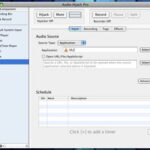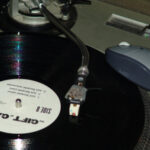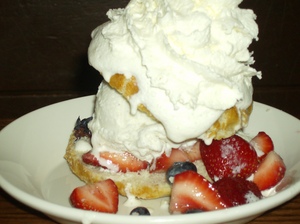Welcome to this series of Articles about recording professional audio in your own home! Going to a studio will benefit your record dramatically, and you’ll save time – or so they say. Not all of us have the money to pay out to production houses to record our music though. I’ve put together this series as a basic guide to getting the most bang for your buck out of your equipment. Sit tight and enjoy the ride. I’m going to take you step by step through the process of Home Recording. Let’s take a look at what a Home Recording Studio might consist of.
First thing’s first. In order to get a great studio sounds you’re going to need a mixing console. These come in two different types: Analog and Digital. A Digital mixer is basically a fancier version of your Windows sound control. The windows sound control is a basic mixer, so you get the idea. A mixer is something that “mixes” the sound. Typically you’ll have a “track” for each instrument and one for vocals. If the vocals are too loud in the mix (hurting your ears) then you can easily adjust the volume to bring them down. The same goes for any other instrument. Analog mixers are the type in which you physically move sliders up and down to reach your desired effect. Digital mixers are like the Windows Sound Control. They’re embedded into a software program and are controlled by the use of the mouse. They both do the same thing, so either one with work for these purposes.
Secondly, you’ll need a Microphone. There are many, and I mean many different types of Microphones. There are mics for vocals, guitars, bass mics, and even sets of microphones designed specifically to record drums. We’re not concerned with all of this for right though right? We just want a good sound. What you’re going ot want to use is either a Shure (brand) Sm57 or Sm58. These mics are by far the most accessible and widely adaptable mics around. The Sm57 is slightly better at recording guitar than the 58, however the 58 is better at recording vocals, but only slightly. These can often by found used at a pawn shop or music store. If you absolutely have to, you can buy one new at about 80 to 90 bucks. Not a bad deal to have a great multipurpose mic. Exclusive Drum mic sets usually run you about three to four hundred bucks by themselves. As you get more comfortable, you’ll be able to expand into the realm of possibilities, but for right now you’ll just need one of these two mics.
Lastly, you’ll need a Recording Workstation. These also (as you may have guessed) come in a variety of different styles. Again, there is Analog and Digital. Digital workstations are by far the more commonly used in this day and age. They’re stored on your computer like any program. Some commonly used programs are Adobe Audition, Cubase, and the free one, Audacity. Any one of these will work for your basic home recording use. Try some demos online and figure out which one fits you the best. Get familiar with the controls as this is where the bulk of the recording process is going to take place.
That’s how you’ll set up your basic studio. Check out my other articles for Part II.





